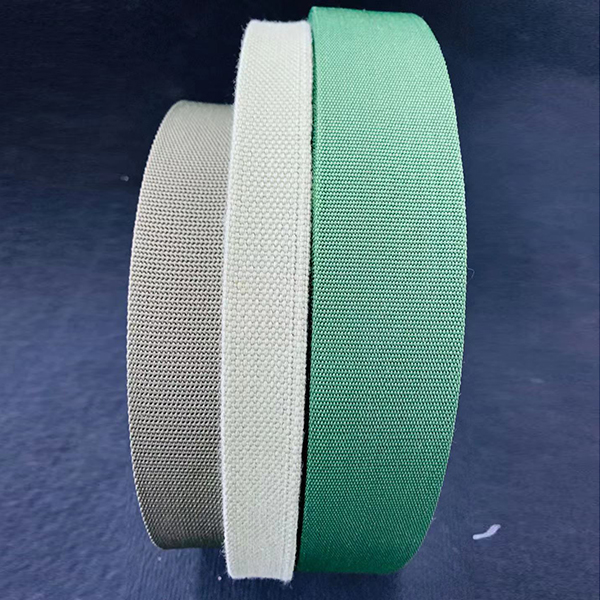Common synthetic fibers mainly refer to the traditional six major fibers, namely polyester, nylon, acrylic, polypropylene, vinylon and chlorine fibers.
In terms of output, it is sorted as polyester>polypropylene>nylon>acrylic.
1. Polyester
Polyester is the Chinese trade name of polyester fiber, PP ribbon 。 Polyester is made from terephthalic acid or polyethylene terephthalate produced by condensation of dimethyl terephthalate and ethylene glycol. It is a large category of synthetic fibers, and its output ranks first among all chemical fibers. Polyester is melt spun, which has a series of properties, such as high breaking strength and elastic modulus, moderate resilience, excellent heat setting performance, high heat resistance, fair light resistance, making pp webbing.
2. Nylon
Nylon is the trade name of polyamide fiber in China. It is a linear structure polymer connected by amide bond (- CONH -) and some methylene groups. In 1935, DuPont Company synthesized polyamide fiber (nylon 66) and began industrial production in 1938. In the same year, German chemist P. Schlack made nylon 6, which was industrialized in 1941. Nylon has a series of excellent properties. Its abrasion resistance ranks first among textile fibers, with high breaking strength, large extension, excellent resilience and fatigue resistance. Its moisture absorption is second only to that of vinylon in synthetic fibers, and its dyeability is better in synthetic fibers.
3. Acrylic fiber
Acrylic fiber is the trade name of polypropylene cyanide fiber in China. It is a synthetic fiber spun by more than 85% of acrylonitrile and other high molecular polymers copolymerized with the second and third monomers. The commercialization of acrylic fiber was first realized by DuPont in 1953. Acrylic fiber has many excellent properties, such as soft handle and good elasticity, so it is called "synthetic wool". It has good sunlight resistance and weather resistance, and good dyeability, so it is mostly used for knitted fabrics and sweaters.
4. Polypropylene
Polypropylene fiber is the trade name of isotactic polypropylene fiber in China. It was successfully developed in 1955 and began industrial production in Italy in 1957. There are many varieties of polypropylene fiber, including filament, short fiber, membrane split fiber, mane and flat fiber. Polypropylene fiber is particularly light, with a density of only 0.91g/cm, which is the light fiber among all synthetic fibers at present. Polypropylene fiber has high strength and good chemical corrosion resistance, but its heat resistance, light resistance and dyeability are poor.
5. Vinylon
Vinylon, also known as vinylon, is the Chinese trade name of polyvinyl alcohol fiber. Untreated polyvinyl alcohol fiber is soluble in water, and its hot water resistance can be improved after acetalization with formaldehyde or titanium sulfate. The narrow sense of vinylon specifically refers to polyvinyl formal fiber after formaldehyde treatment. Vinylon was put into industrial production in 1940. Vinylon has relatively good moisture absorption and was once called "synthetic cotton". Vinylon has good chemical stability, corrosion resistance and light resistance
Strong alkaline energy. It is difficult to degrade vinylon in seawater or soil for a long time, but vinylon has poor heat and water resistance, poor elasticity, poor dyeing performance, dim color, and is easy to fuzz and pilling.
6. Chloro fiber
Chlorine fiber is the trade name of PVC fiber in China. PVC was successfully researched in 1931 and put into industrial production in Germany in 1946. The strength of chlorine fiber is close to that of cotton, and its wear resistance, warmth retention and sunlight resistance are better than those of cotton and wool. Chlorine fiber has good stability against inorganic chemical reagents, strong acid and alkali resistance, strong corrosion resistance and sound insulation, but poor stability and dyeing performance against organic solvents.


